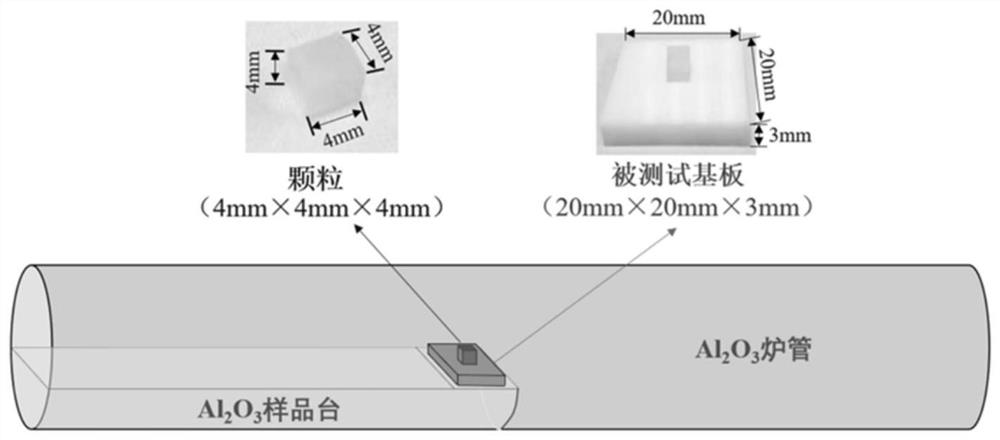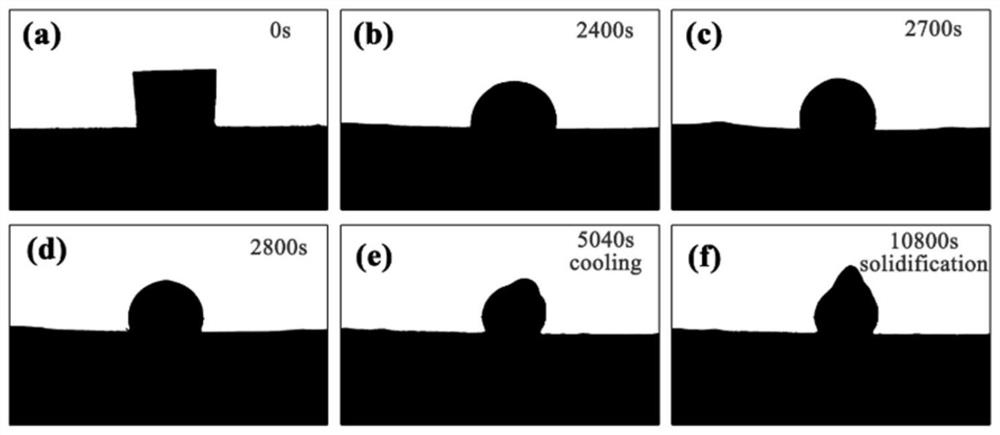Preparation process of composite ceramic coating release agent
A preparation process and technology of composite ceramics, applied in the directions of coating, crystal growth, polycrystalline material growth, etc., can solve the problems of lower yield of central silicon, insufficient photoelectric conversion efficiency, difficulty in demoulding, etc., to improve first-class products. efficiency, improve the anti-seepage effect, and control the production cost
- Summary
- Abstract
- Description
- Claims
- Application Information
AI Technical Summary
Problems solved by technology
Method used
Image
Examples
Embodiment 1
[0029] Take D50=1.7μm single-phase Si 2 N 2 O powder, single-phase β-Si with D50=1.4μm 3 N 4 Powder, mass fraction is 5% PVA solution, counted by weight, 5 parts of β-Si 3 N 4Powder, 5 parts of Si 2 N 2 The O powder was put into a container made of polyethylene, and then 90 parts of the PVA solution was added.
[0030] Put silicon nitride balls into the container containing the mixed powder and polyvinyl alcohol solution and cover it tightly, place it in a planetary ball mill for 3 minutes to make it uniform, and obtain a compound slurry. The slurry was spray-coated on the inner surface of a quartz crucible preheated to 90° C., with a porosity of 15%, a square bottom surface of 100 mm, and a depth of 100 mm. Put the crucible coated with the composite coating into a drying oven, and dry it at 120°C for 2 hours. Put the dried crucible into the muffle furnace and keep it warm at 800°C for 2 hours, and the inner surface of the crucible will obtain Si 2 N 2 O / β-Si 3 N 4...
Embodiment 2
[0033] A kind of Si for silicon ingot demoulding 2 N 2 O / β-Si 3 N 4 The preparation method of composite coating, comprises the steps:
[0034] Take D50=1.2μm single-phase Si 2 N 2 O powder, single-phase β-Si with D50=2μm 3 N 4 Powder, mass fraction is 5% PVA solution, counted by weight, 5 parts of β-Si 3 N 4 Powder, 10 parts of Si 2 N 2 O powder was put into a container made of polyethylene, and then 85 parts of PVA solution was added.
[0035] Put silicon nitride balls into the container containing the mixed powder and polyvinyl alcohol solution and cover it tightly, place it in a planetary ball mill for 5 minutes to make it uniform, and obtain a compound slurry. The slurry was spray-coated on the inner surface of a quartz crucible preheated to 90° C., with a porosity of 15%, a square bottom surface of 100 mm, and a depth of 100 mm. Put the crucible coated with the composite coating into a drying oven and dry it at 120°C for 3 hours. Put the dried crucible into t...
Embodiment 3
[0038] A kind of Si for silicon ingot demoulding 2 N 2 O / β-Si 3 N 4 The preparation method of composite coating, comprises the steps:
[0039] Take D50=1.4μm single-phase Si 2 N 2 O powder, single-phase β-Si with D50=1.6μm 3 N 4 Powder, mass fraction is 5% PVA solution, counted by weight, 4 parts of β-Si 3 N 4 Powder, 8 parts of Si 2 N 2 O powder was put into a container made of polyethylene, and then 88 parts of PVA solution was added.
[0040] Put silicon nitride balls into the container containing the mixed powder and polyvinyl alcohol solution and cover it tightly, place it in a planetary ball mill for 4 minutes to make it uniform, and obtain a compound slurry. The slurry was spray-coated on the inner surface of a quartz crucible preheated to 90° C., with a porosity of 15%, a square bottom surface of 100 mm, and a depth of 100 mm. Put the crucible coated with the composite coating into a drying oven, and dry it at 120°C for 5 hours. Put the dried crucible into...
PUM
| Property | Measurement | Unit |
|---|---|---|
| particle diameter | aaaaa | aaaaa |
| particle size | aaaaa | aaaaa |
Abstract
Description
Claims
Application Information
 Login to View More
Login to View More - R&D
- Intellectual Property
- Life Sciences
- Materials
- Tech Scout
- Unparalleled Data Quality
- Higher Quality Content
- 60% Fewer Hallucinations
Browse by: Latest US Patents, China's latest patents, Technical Efficacy Thesaurus, Application Domain, Technology Topic, Popular Technical Reports.
© 2025 PatSnap. All rights reserved.Legal|Privacy policy|Modern Slavery Act Transparency Statement|Sitemap|About US| Contact US: help@patsnap.com



